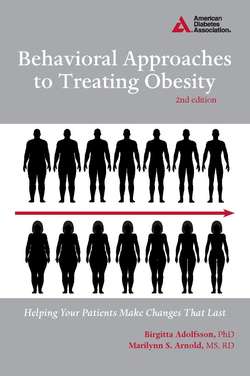Читать книгу Behavioral Approaches to Treating Obesity - Birgitta Adolfsson - Страница 3
На сайте Литреса книга снята с продажи.
ОглавлениеPart I
Assessing the Problem
Chapter 1
The Global Challenge of Obesity
Obesity is a problem. Excess body fat, also known as adipose tissue, is a prominent risk factor for many chronic health problems, including diabetes, heart disease, stroke, cancer, joint problems, and psychosocial stress. Increases in weight drive a similar rise in chronic disease (WHO 2009). Reducing excess fat is a challenge for those who carry it, those who attempt to treat it, and those who pay for its multiple consequences.
We are all likely aware that the rates of obesity have increased dramatically (15 to 34%) in the past 30 years (CDC 2010), despite an ever-expanding array of products, programs, and treatments promoted as remedies. Efforts to reduce the number of people with obesity and to lessen the extent to which they suffer from it present a complex global challenge.
Genetics and environment contribute to obesity, but the rapid increase in obesity rates within the past decade follows a change in human behavior, not a change in genetic makeup (Hill 2006). Today, our unchanged biology, one that has undergone millennia of evolution, survives in an environment in which the pace of change rapidly outstrips the rate of adaptation. It is an environment that in multiple ways supports less activity and invites caloric excess. There is no one way to address the obesity problem, but there are multiple opportunities to reshape our physical environment and adjust our responses to the situation at hand.
In addition to the continuing work of medical science, curbing the obesity explosion poses behavior-related challenges at three distinct levels, each of which has a different role and responsibility in addressing this issue.
1. To the individual, who assumes responsibility for his or her self-care decisions.
2. To the health care system, which informs and supports individual efforts to make sustainable dietary and activity lifestyle changes.
3. To society, which promotes an environment that increases access to nutrient-dense food and physical environments that invite activity.
This book is about the second challenge. How do health care professionals interact with patients in a way that supports each individual’s innate interest in their own well-being?
